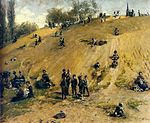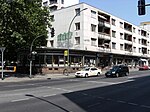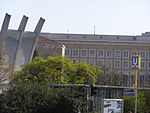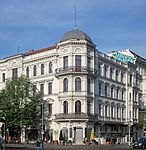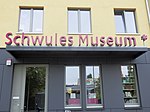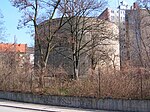Viktoriapark

The Viktoriapark (English: Victoria Park) is an urban park in the locality of Kreuzberg in Berlin, Germany. It opened in 1894. It is situated on the Tempelhofer Berge range, forming the northern slope of the ground moraine Teltow Plateau, overlooking the glacial valley with Berlin's city centre. The major landmark of the park is a cast iron monument of 1815 dedicated by King Frederick William III of Prussia to the liberation wars (Befreiungskriege) fought at the end of the War of the Sixth coalition against France in the course of the Napoleonic Wars. It provides an excellent viewpoint over much of the central and southern portions of the city. In summer an artificial waterfall originates at the foot of the monument and continues down the hillside to the intersection of Großbeerenstraße and Kreuzbergstraße. A historic wine-growing area, today the park is neighbouring two small vineyards, one in the northeast founded in 1968 and owned by the Senate of Berlin and cultivated by the adjacent market garden, the other one established in summer 2006 within the Victoria Quarter on the southern slope of the Kreuzberg hill. However, only the old vineyard provides for the local "Kreuz-Neroberger" wine, gained from vines donated by Kreuzberg's twin towns Wiesbaden (1968) and Ingelheim am Rhein (1975), as well by the Bergstraße county (1971 and 1973) and from Bad Bergzabern (1985). About 600 bottles are pressed each year.
Excerpt from the Wikipedia article Viktoriapark (License: CC BY-SA 3.0, Authors, Images).Viktoriapark
Kreuzbergstraße, Berlin Kreuzberg
Geographical coordinates (GPS) Address Nearby Places Show on map
Geographical coordinates (GPS)
| Latitude | Longitude |
|---|---|
| N 52.488888888889 ° | E 13.380555555556 ° |
Address
Tiergehege im Viktoriapark
Kreuzbergstraße
10965 Berlin, Kreuzberg
Germany
Open on Google Maps

